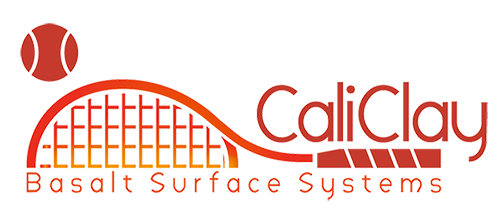Clay is slippery, and slipping can cause leg strains and injuries. Changing direction on a slippery surface is more difficult, so true clay-court experts learn to slide into the ball so that they will have stopped by the time they need to change direction, but the sliding itself sometimes causes injuries, as players can hit slow spots or simply have a shoe angled incorrectly.
No court surface varies in the height of the ball’s bounce as much as clay. On cold, wet clay, the ball bounces quite low; on dry, hot clay, it bounces quite high. The outcome of a tournament can thus depend more on weather than it would on any other court surface, another increase in the potential influence of luck.
Unless a clay court has an advanced and expensive drainage system, any substantial rain will make the court unusable for at least several hours, often a full day.
Clay must be watered and groomed regularly, usually at least daily. Like all earth, clay courts are subject to erosion by wind and rain; new clay must be brought in to replace the losses. Some of the lost clay can also be found on the players, as it goes home on clothing and in shoes. Frequent clay-court players usually have the beginnings of a court inside their houses after a while. The worst place for clay dust to end up is in the player’s eyes; as you serve, you knock a small cloud of clay out of the ball’s fuzz, and it rains down on your head.
If you’re a sidespin artist, clay will blunt one of your favorite weapons. The loose surface dissipates sidespin so that heavy slice serves and sidespin-slice backhands, for example, turn less dramatically than they do on other surfaces.
Advantages of Clay
Despite its many arguable disadvantages, clay is widely considered a premium surface, one people will pay to use even when hard courts are available for free. The feature players probably value most in clay is its softness underfoot; it absorbs a significant amount of shock from each step the player takes, reducing the cumulative stress on leg joints from routine running around the court.
Many players also enjoy the slowness of clay, as it gives them more time to reach each ball, thus leading to longer rallies and better exercise. The clay’s slowing of the ball also reduces its basic impact force against the racquet, helping somewhat to offset stress on the arm from more frequent off-center hits.
If you want to improve your patience and your ability to think another shot ahead, playing on clay will help, as it makes quick put-aways considerably more difficult. Players who rely on ending points early with one big shot, especially the serve, tend to find clay the most difficult surface.
The prevalence of clay courts tends to coincide with the warmth and humidity of the climate. Clay is much cooler under a hot sun than a hard court is. In some hot, dry climates, the difficulty of keeping clay courts watered makes them rare, but where heat and water are both plentiful, such as in the southeastern US, clay is especially popular.
Although even the best clay court will take at least an hour to dry after a heavy rain, clay is by far the safest surface to continue playing on in a light drizzle. Hard courts get very dangerous when just slightly wet, and grass is worse. The traction on clay can remain adequate for as much as half an hour in light precipitation; the lines become slippery, but they’re narrow and visible enough to be reasonably easy to avoid.
A freshly groomed clay court also helps with one of the trickier tasks in all tennis, making accurate line calls. Except when it hits entirely on a line, the ball leaves a distinct mark on a clay court, and the absence of a mark near a line attests to where the ball landed too. To make proper use of ball marks, though, those near lines should be erased so that they’re not mistaken for marks that occur later.


